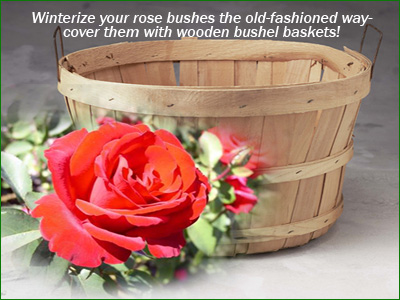New England Gardening Advice By the Month -October
Last Updated:
Are you one of those people who think that the New England gardening season is over after September? THINK AGAIN!! The month of October is one of the most important (and fun) months of the year for a New England gardener. There's lots to do so let's get started...

Cutting dead wood from spent perennials in the garden and mulching beds- I'm sure your plants have been bitten once or twice by frost now(unless you're in a coastal area in New England), and its time for those fall gardening chores! Cut down any woody stems that have died from all of your perennials and put down a protective layer of mulch over them. Most organic materials such as leaves, grass clippings or even peat moss will do the trick. This layer over your garden should be one to two inches thick, enough to provide a little extra protection from New England winter temperatures and cold winds but not so much that you'll be digging up wheel barrels of the stuff next spring. The other beneficial thing it does is that it will break down somewhat over the winter, supplying your plants with some fresh nutrients during their spring and summer growth and helping your historically sandy soil retain water better. Roses are especially susceptible to wind damage in the garden- old timers in New England would cut their bushes to about 12-18 inches above the ground, mulch slightly with organic matter around their base, then cover them with wood baskets. The wood would insulate the rose bushes from the biting winds of winter but would still let air in to circulate and prevent rotting. Today, many garden centers sell styrofoam rose covers- we suggest you do not use them because they allow no air in to circulate and can often kill the bushes during the early spring.
Plan your spring bulb garden and get those daffodil and crocus bulbs in the ground! At no other time of the year can your imagination run so wild with what you want your New England spring bulb garden to look like. What makes it so unique is that you have no second chances with bulbs. You plant them in the fall and they emerge in the spring. Plant too little in your garden and you'll have to wait until next fall to fill in the empty spots, assuming that is you can remember exactly where the existing bulbs are planted. The point? Do it right the first time and save yourself a lot of aggravation moving forward. If you only have a few bulbs, say 50 or less, plant them quite close together (12-15 inches apart at most)in your garden and you'll have a dramatic show of color in the spring. Spreading them out one a time all over the yard simply doesn't work. You are much better off moving from spot to spot each year in the garden as your budget permits, putting down at least 20 bulbs in one area, so that they stand out and are viewed as a group. Before you know it, your bulbs will be mulitplying year after year (esp. crocus and daffodils), and your spring flowers will too- with little or no maintenance on your part!
Lastly, that maintenance part we just mentioned...
Summer-blooming bulbs and perennials can be lifted and split. Summer-blooming bulbs like native and asiatic lilies will reproduce by making extra bulbs under the soil. This is okay for a few years, but there will come a time when flower production is reduced and they must be lifted, separated and replanted about 8 -12 inches apart. This process must be repeated every few years and is best done in the early fall- the benefit for you, free plants!
Just as most of your summer garden bulbs will multiply each year in New England, the same is true for your spring bulbs like crocus and daffodil. The solution- yup, you guessed it, dig up the clumps and separate the bulbs back to a manageable 12-15 inches. This should be done in the late spring or early summer after blooming and the green leaves have died down. Move the extra bulbs to a new location in your spring garden or give them to neighbors or friends - everybody likes a freebee! We feel that there is no easier New England garden than the spring New England garden - just plant it once and tend to it a couple times a decade, how great is that! See you next month with more New England gardening advice!